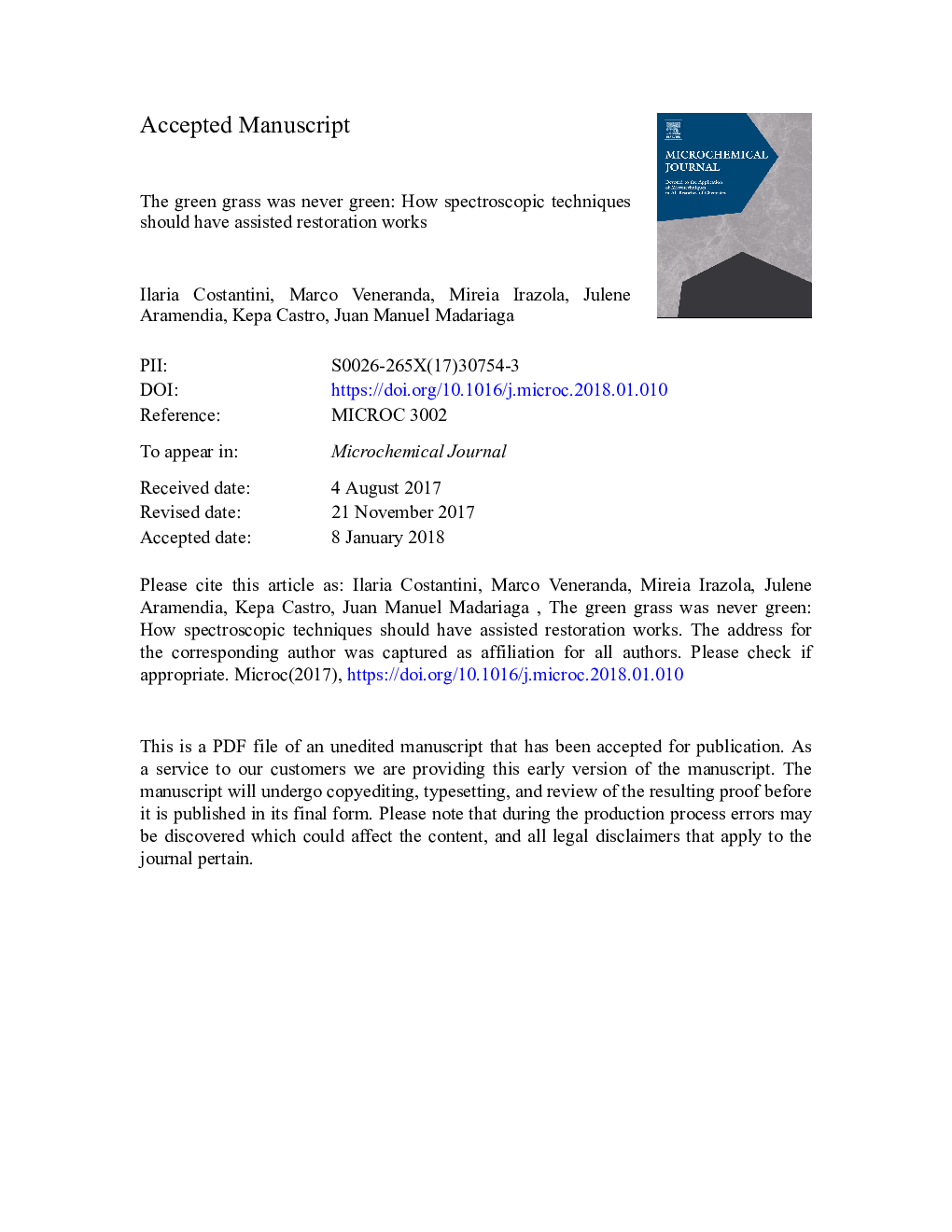| Article ID | Journal | Published Year | Pages | File Type |
|---|---|---|---|---|
| 7640917 | Microchemical Journal | 2018 | 31 Pages |
Abstract
This paper presents the results of a multidisciplinary research based on the use of different diagnostic techniques for the study of wall paintings that belong to the late Gothic period and are preserved in the church of Saint Stephen in Ribera de Valderejo (Álava, Basque Country). Portable Raman and X-ray fluorescence spectroscopy measurements carried out in-situ allowed to characterize the plaster composition, the colour palette used by the artists and the materials employed during the restoration works in recent times. The analyses were focused especially on some areas that appear unusually grey. Apparently, the results obtained by both techniques seem to be contradictory and it was necessary to perform a selective sampling in some areas of interest which were analyzed in the laboratory. Raman spectroscopy and scanning electron microscope, coupled with energy dispersive X spectroscopy, applied on the cross-section of micro samples, made possible to clarify some important issues, showing the inadequacy of the restoration works carried out in previous years and the presence of a potentially dangerous material too (magnesium arsenate), whose use was not documented. The results demonstrated the importance of using diagnostic tools for the identification of the materials belonging to Cultural Heritage, especially before restoration works in order to choose the most appropriate methodology and to respect the original appearance of the paintings.
Related Topics
Physical Sciences and Engineering
Chemistry
Analytical Chemistry
Authors
Ilaria Costantini, Marco Veneranda, Mireia Irazola, Julene Aramendia, Kepa Castro, Juan Manuel Madariaga,
